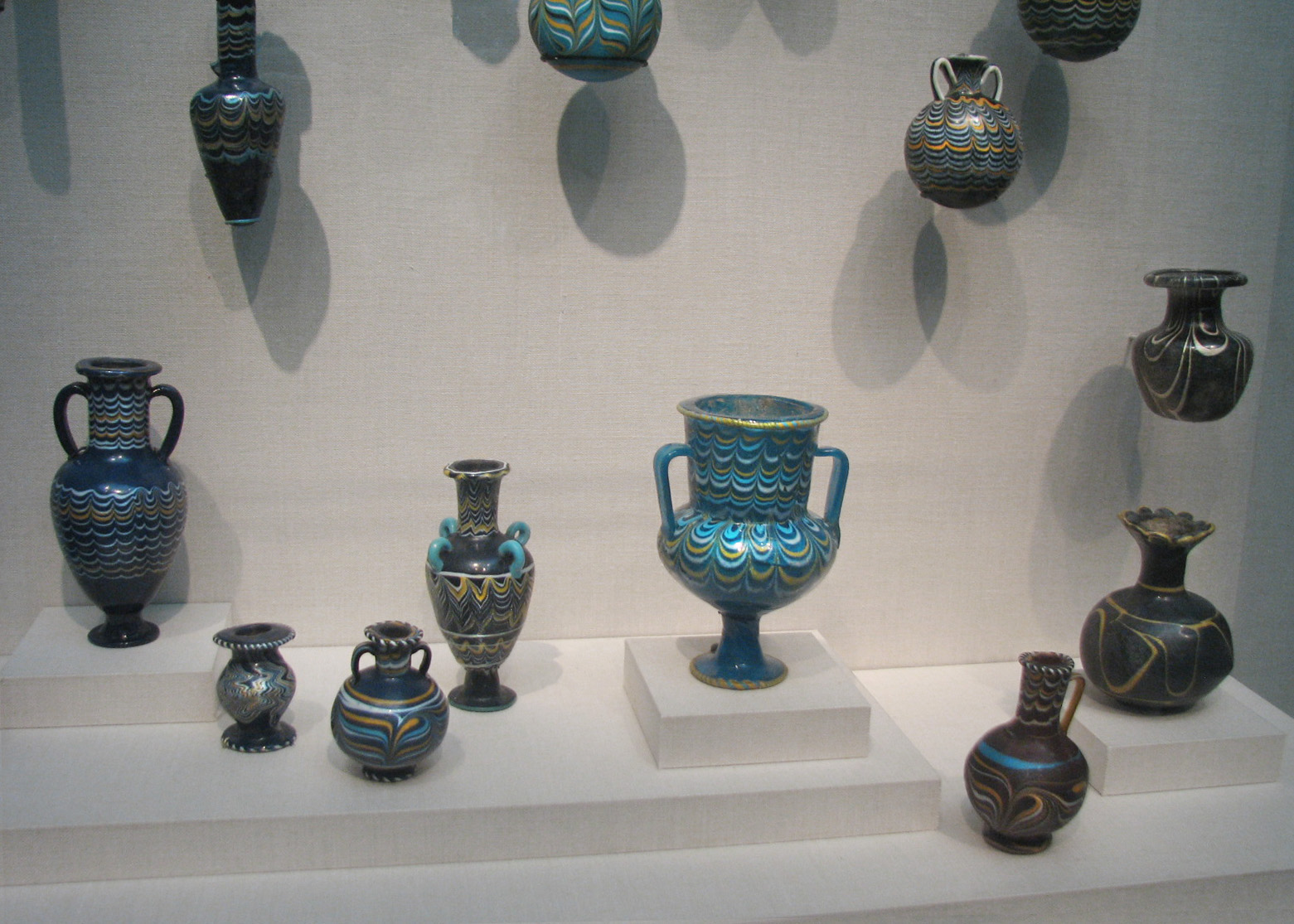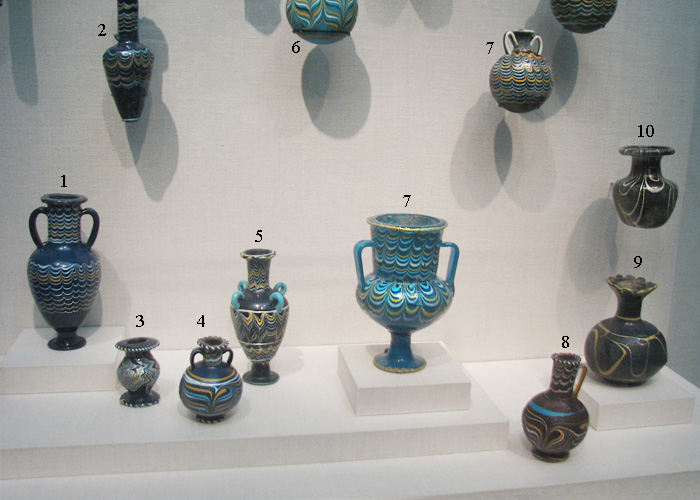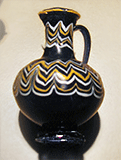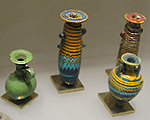
All: glass, New Kingdom, Dynasty 18, Reign of Amenhotep III - Akhenaten, ca. 1390-1336 B.C.E., except for #10
All Gift of Charles Lang Freer
H: 14.2 W: 6.7 D: 6.7 cm
2: Bottle, F1909.433 (Better view at Museum website)
H: 13.7 W: 4.7 D: 4.7 cm
3: Jar, F1909.420
H: 5.4 W: 3.9 D: 3.9 cm
4: Miniature two-handled vase, F1909.429
H: 6.9 W: 5.3 D: 5.3 cm
5: Four-handled vessel, F1909.413
H: 12.2 W: 5.4 D: 5.4 cm
6: Vessel, F1909.416 (Better view at Museum website)
H: 8.4 W: 6.7 D: 3.8 cm
7: Two-handled jar, F1909.430
H: 13.3 W: 9.3 D: 8.7 cm
8: Vessel, F1909.412
H: 9.2 W: 5.7 D: 5.7 cm
9: Pomegranate flask, F1909.423
H: 10.2 W: 8.0 D: 8.0 cm
10: Vessel, F1909.417
Roman Period, 100-200 C.E.
H: 8.0 W: 6.6 D: 6.6 cm





